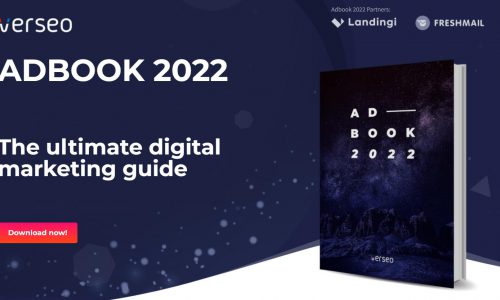Table of contents
Czytasz teraz:
User-Generated Content – What Is It?
Close
In the past, in the world of marketing, the advertiser spoke and the audience listened. Today, the relationship between the seller and the buyer has changed dramatically. Thanks to the Internet, we’ve said goodbye to the imbalance in communication. Monologues have been replaced by dialogues, and what the client says is now sacred. Why? Because User-Generated Content pays off. What exactly is it and how to use this tool in marketing strategies? Let’s find out!
What is User-Generated Content?
It’s content created voluntarily by users, not by brands. It can take different forms ranging from various types of text and pictures to videos. According to the OECD definition, UGC must be at least partially “creative”. And… that’s pretty much it when it. As you can see, it’s a very broad definition.
Types of UGC
User-generated content can take many forms, most commonly:
- social media posts – including comments under brand posts on fan pages, reviews, or creative responses to marketing communications,
- posts on internet forums,
- reviews,
- vlogs,
- blog entries touching upon topics related to a given brand.
All kinds of user opinions are connected with the brand.
(You will find the rest of the article below the form)
Contact us and get a free quote
We will analyze your business and prepare an individual price offer for the optimal marketing mix for you. Completely free.
Verseo spółka z ograniczoną odpowiedzialnością with its registered office in Poznań, at the following address ul. Węglowa 1/3, 62-122 Poznań is an administrator of your personal data.
About Verseo
Company’s office is located in Poznań. Company is entered into the register of entrepreneurs, kept by the District Court of Poznań – Nowe Miasto i Wilda in Poznań, 8th Commercial Division of the National Court Division under number 0000596164, NIP (Tax Identification Number): 7773257986. You can contact us by writing a letter on the address indicated above or e-mail:[email protected]
You have right to:
- access to your personal data,
- correct your personal data,
- demand to remove your personal data,
- restrain to process your personal data,
- object of process your personal data,
- transfer your personal data,
- withdraw consent.
If you think we process your personal data not in accordance with the law, you have right to object to supervisory authority – President of Personal Data Protection Office.
We process your personal data to:
- handle your question, based on art. 6 ust. 1 lit. 6 of General Data Protection Regulation
- promote our goods and services including ourselves in connection with your consent, based on art. 6 ust. 1 lit. a of General Data Protection Regulation
- protect or claim in connection with our reasonable interest, based on art. 6 ust. 1 lit. f General Data Protection Regulation
You share your personal data freely. Please remember that without sharing your personal data you will not be able to send us a message, and we will not be able to answer you.
We can share your personal data with trusted recipient:
- providers of tools made for: website analytics, marketing automation,
- hosting operators.
We will process your personal data by the time:
- which is necessary to achieve a specific purpose for which they were collected and after this term by the time which is necessary to protect or possible claim,
- of withdraw your permission .
We don’t process personal data in a way, which would involve making only automated decisions about you. More information about processing of personal data you can find in our privacy policy.
The Value of User-Generated Content
Let’s stop and consider – how do you make purchase decisions? What affects you more: an ad that promises product X is the best in the world? Or a comment from a user on a brand’s fanpage or an opinion portal, honestly pointing out the advantages and disadvantages of a given solution? Which is more credible to you? What kind of content are you looking for yourself? This is why UGC is so important.
Below is a list of the advantages of this type of content.
- Credibility
According to Nielsen research, 92% of people are willing to believe an opinion heard from a person they know, and as many as 70% find online opinions credible. What does this mean? An authentic message coming from a “normal user”, not a marketer, is much more credible than an advertisement.
- Authenticity
Who still believes ads present a true picture of reality? Traditionally, they’re widely regarded as sugar-coated and exaggerated. No wonder – it’s their “poetry”. But what about authenticity? It’s significantly higher in reviews and other content about products created by users.
This has given rise to the popularity of “expectations vs. reality” style photo comparisons of photos from promotional materials and pics taken after purchasing the product (like a fast-food chain hamburger or clothing from an online store). As a result, blogs with reviews and channels of this type on YouTube are becoming more and more popular.
- The Value of User-Generated Content
User-generated can tip the scales toward completing a transaction. It’s highly probable, especially if clients are in the brand’s target group and are already interested in a given product. This has been confirmed by research – as many as 80% of respondents agree that UGC has a significant impact on decisions to buy specific products.
- Brand Awareness Activities
UGC builds brand awareness – arouses interest in products, creates positive connotations, and strengthens the bond between the consumer and the company. These relationships are not purely “business” – especially since much of the content generated by users is created under the influence of emotions (both positive and negative!). Therefore, they build long-term engagement.
- Inbound Marketing
A model in which customers come to a company and create buzz. This is a much more effective form of acquiring a consistent audience – one that is loyal and returns time and time, attracting new customers.
- Relatively low costs
It’s difficult to estimate the costs of generating relevant UGC content. Coca-Cola paid a lot for creating beverage packaging with personalized labels that very quickly became online and offline stars. A company that creates a simple contest on Instagram will pay a different price. One thing is certain: skillfully (and honestly!) cast fishing line will hook profits.
- Strengthening SEO activities
In the SEO world, “content is the king”. But not the first better content, but the one that has real value for users. Google’s algorithms no longer focus solely on the number of keyword repetitions in content. Yes, it is still important, but not the most important. What matters now is the naturalness, user-friendliness, and usefulness of the content. Therefore, if e.g. users post links to a brand’s products on their social media profiles or blogs, the chances of ranking higher increase significantly, while at the same time reducing the cost of website positioning.
- An excellent source of feedback
The goal of every company is to create products that are eagerly purchased by customers from a specific segment. However, it’s not you but your recipients who know what they expect. You can try to shape their needs and point to available solutions. But you also have to listen to feedback, and not just the songs of praise, but above all – the criticism. UGC is a good source of such information. You can often find valuable suggestions in the comments and reviews that allow you to change your strategy to work better for your customers and your business. This shortened list of benefits that can be drawn from User-Generated Content already shows that it is worth taking care of its creation.
Creating User-Generated Content
Create an atmosphere that invites people to share impressions/experiences and thoughts. What products would you be willing to tell your friends about? What do you recommend to them? In what situations are you willing to take the time to prepare a review of a hotel you happened to be in? There are specific emotions associated with these experiences.
People who will be willing to create UGC are a very diverse group. There will be negative feelings and global views. There will also be advice, like in a Facebook group or on a forum. Some users can be encouraged to create UGC, some will motivate themselves.
But how can you influence the frequency of UGC generation?
- Social Media Contests
This is a simple way to increase the buzz towards your brand. Prepare a contest for users in which you offer them valuable prizes, e.g. for preparing a short post related to your products. You can also reward them for writing the most interesting review, creating a photo related to the theme, a short story, a poem… The more creativity you unleash, the better the entertainment. Sometimes the opportunity to review the works of others becomes a better reward than real prizes!
- Encouraging Review
This was recommended for online stores a while ago – reviews used to be more important than low prices. Today, thanks to how the feedback system on Google works, web users are looking for reviews of almost everything from restaurants and bars to entertainment venues, offices, stores, up to tourist locations. Encourage customers to leave reviews. How? You can simply ask them to leave a review by handing out a leaflet encouraging them to leave a review or sending an email with such a suggestion. You can also offer additional incentives, such as discounts on future purchases. Don’t just reward those who leave the highest ratings and raving reviews! Remember: frank opinions and authenticity are the secrets to the power of User-Generated Content.
- Engaging Social Media Posts
If you have a large enough user base on social media, asking an engaging question will be an easy way to get a huge amount of user-generated content yourself.
Sometimes a simple question about how their day is going will suffice. In other situations – a serious question about their opinion on an issue related to the brand’s business. But beware: such discussions can get heated! That’s why you need a moderator. Don’t forget: “moderating” doesn’t mean deleting unfavorable comments, but, for example, reacting to the emerging heckling and answering questions that will be raised against you!
- Interacting on Social Media
Comments may appear on your social media profiles about experience with the brand or a specific situation that evoked emotions in the user. You can’t leave them unanswered. To generate UGC, include open-ended questions – ask and encourage your audience to “open up”. It’s also worth opting for a looser communication style – especially in response to negative comments. If you keep it lighthearted, your answers will become a topic of discussion in their own right. And that’s the point!
What to avoid when creating UGC?
There are many ways to inspire your audience to create content related to your brand. Remember, it needs to be done thoughtfully.
Avoid:
- excessive encouragement to comment and share – if it appears too often and too pushy, it will discourage rather than encourage creativity and interaction,
- Artificial crowds- it’s better to communicate openly and honestly, on behalf of the brand (or through its ambassadors) than to pretend to be ordinary users. False posts will be detected quickly, and the action will lead to defeat, not victory,
- publishing UGC without the creator’s permission – for example, if you receive an email with a positive review of a company, before you publish it, ask if you can do so. The same goes for creative works sent to contests and other company events. Ask for permission to publish, preferably in writing, and only then brag about what you received,
- create campaigns aimed at building User-Generated Content among people outside your target audience and in a style that does not match your brand – after all, the ultimate goal of such communication is to build a specific image among specific audiences.
- If you want to know more about UGC and other inbound marketing tools and are wondering how to implement them in practice – let’s talk about it! Drop us a line!












